English is the new SQL!
Kinetica's SQL-GPT leverages a Large Language Model (LLM) to translate natural language into SQL queries. This powerful capability empowers users of all kinds to have a conversation with their data using plain language.


Ask Anything of your Data
Accurate
Kinetica employs a customized LLM that can be fine-tuned for accuracy with specific enterprise terminology and taxonomies. Kinetica is able to harness specialized analytic functions such as time-series, graph, geospatial, and vector search.
Fast
You’ll be shocked at how quickly SQL-GPT is able to answer completely unknown questions - and without having to build tedious pipelines or engage in extensive data modeling and tuning.
Secure
With Kinetica's native LLM, customer data is more secure as inferencing takes place in-database within a customer's premises or cloud perimeter
Integrated
SQL-GPT in Kinetica integrates with an extensive variety of data platforms and processing tools which enables you to harness the power of LLMs without overhauling your data platform

Blazingly Fast Response Times
(Even with Unknown Questions)
Kinetica is designed from the ground up to leverage the vectorization capabilities of GPUs and modern CPUs to answer complex queries. Vectorization unleashes significant performance gains – particularly for ad-hoc queries that may result in table scans and multi-way joins that often cripple other databases.
Ask a Variety of Questions
Fast Relational
Key-Value
Graph
Spatial
Time-Series
Machine Learning
The Results You're Looking For...

Try SQL-GPT, Free on Kinetica Cloud
Experience Conversational Query
In a vectorized query engine, data is stored in fixed-size blocks called vectors, and query operations are performed on these vectors in parallel, rather than on individual data elements. This allows the query engine to process multiple data elements simultaneously, resulting in radically faster query execution on a smaller compute footprint. Vectorization is made possible by GPUs and the latest advancements in CPUs, which perform simultaneous calculations on multiple data elements, greatly accelerating computation-intensive tasks by allowing them to be processed in parallel across multiple cores or threads.
While LLMs can convert natural language to SQL, the speed of response for data analytics questions is still dependent on the underlying data platforms being used.
Conventional analytic databases typically require extensive data engineering, indexing and tuning to enable fast queries, which means the questions must be known in advance. If the questions are not known in advance, a query may take hours to run or not complete at all.
Kinetica vectorized columnar architecture enables convergence of multiple modes of analytics such as time series, spatial and graph that broadens the types of questions that can easily be answered, such as, "How can we improve the customer experience considering factors such as seasonality, service locations and relationships?"
Kinetica is able to ingest massive amounts of streaming data in real-time to ensure answers represent the most up to date information, such as, “What is the real-time status of our inventory levels and should we reroute active delivery vehicles to reduce the chances of products being out of stock?
There is no additional cost for the ChatGTP integration in Kinetica. Users can experience this feature for free on Kinetica Cloud or Dev Edition.
Book a Demo!
The best way to appreciate the possibilities that Kinetica brings to high-performance real-time analytics is to see it in action.
Contact us, and we'll give you a tour of Kinetica. We can also help you get started using it with your own data, your own schemas and your own queries.








